

Matt Campbell
2026 Hyundai Tucson Hybrid review
3 Hours Ago

Design Contributor
Anders Warming is a professional car designer with over 22 years of experience. He was born in Denmark and grew up in Copenhagen. Between 1992 and 1996, he studied in the Art Centre College of Design.
He describes himself as an avid automotive painter who has always based his design expertise on the craft of drawing and visualising a 3D object.
During his career in high-ranking design positions in BMW, he was responsible for the exterior design of numerous production vehicles. Those include the Z4 (2002), 1 Series (2011), the initial phase of the 2 Series (2014), 3 Series (2011), 4 Series (2014), 5 Series (2010), 6 Series (2011), X1 (2008), X3 (2010) and X5 (2013).
He also designed exciting concept cars for BMW including the interior of the X-Coupé (2001), the exterior of the groundbreaking Gina (2003), the retro-futuristic Mille Miglia (2006) and the Vision Efficient Dynamics (2009) which evolved into the BMW i8 (2014) production car.
After BMW, Adners moved to MINI as the head of design. There, he penned the MINI Hatch (2013), Cabrio (2015), Clubman (2015) and Countryman (2017) production models, as well as the Rocketman (2011), Vision (2013), Clubman (2014), Superleggera Vision (2014), Clubman Vision Gran-Turismo (2015) and Next 100 Vision (2016) concept cars.
Last but not least, he was also responsible for the design of the Borgward Isabella (2017) concept car.
In 2019, Anders Warming created his own design studio, dubbed Warming Design.
The studio is currently working on Future Mobility projects for international clients including vehicles for Evergrande Automotive Group (New EV Brand “Hengchi”), FlyNow Aviation GmbH (Future Autonomous Personal Aviation Drone), and others.
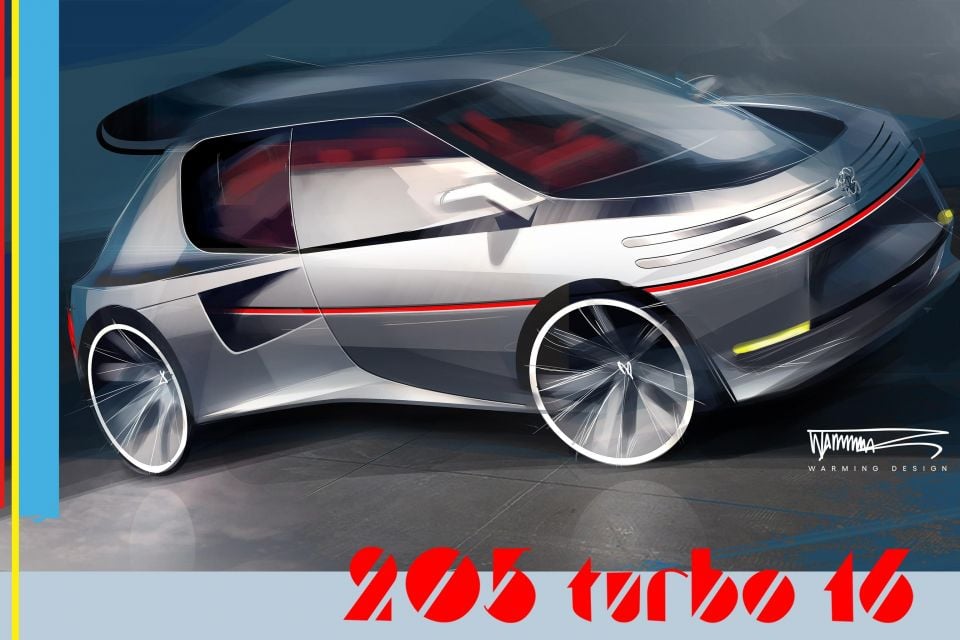
The P205T16 is an homage to the Peugeot 205 Turbo 16 (1984-1986). The designer is a huge fan of the Groupe B rally cars from the ‘80s, and remembers being fascinated by their exaggerated proportions and graphics as a teenager.
As a free time project, he decided to create a reincarnation of the mid-engined 205 T15 integrating modern aerodynamic features, while maintaining the iconic shape and characteristic design elements.
From the side view, the concept retains the overall silhouette of its predecessor with a compact wheelbase, short overhangs, large wheels, and wide front and rear fenders.

The horizontal character line on the profile extending through the front is painted in red, emphasising the clamshell shape of the 205.
Towards the back it disappears inside the side air intakes positioned on the boxy rear fenders, and communicate the mid-engined nature of the car.
The waistline running from the headlights to the tail lights is also horizontal when seen from the profile, but when the viewing angle changes we can see the complex triangular surfaces all meeting at the red B-pillar.
The designer used it as a central design feature of the car and a meeting point of the twisting lines. The B-pillar is inclined and extends towards a huge, flat roof spoiler reminiscent of the signature rear wing of the Group B rally car.
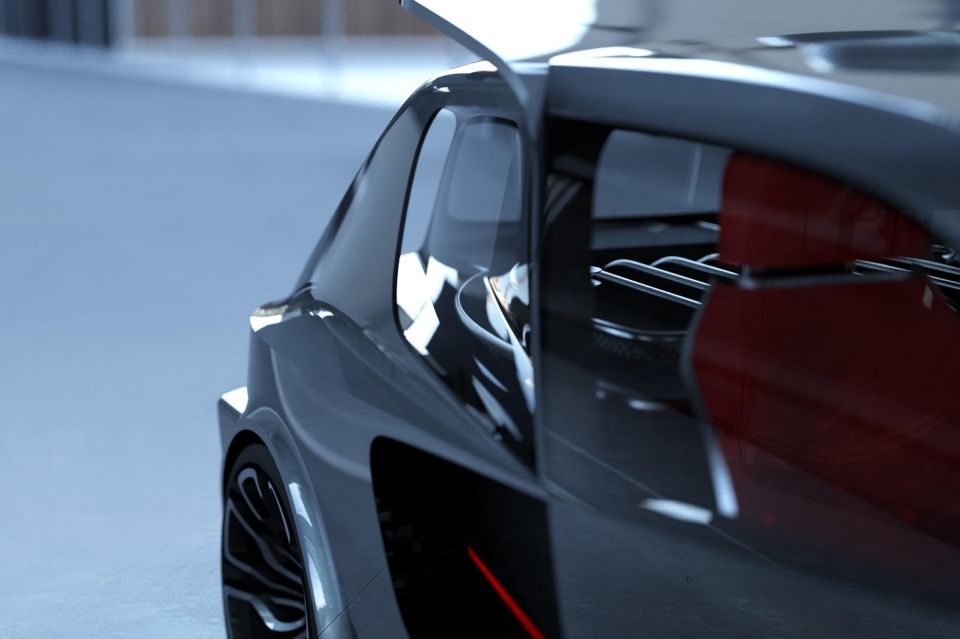
The window line is similar to the original but the bottom part has a more modern triangular shape, leading the eye to the side intakes.
Another characteristic feature is the floating C-pillar, which looks like an aerodynamic fin. This hollow intake was inspired by the Ferrari 599 GTB (2006-2012) and can also be found on the flying buttresses of the second-generation Ford GT (2015), the second-generation Honda NSX (2016), and the BMW i8 (2014).
The unique rims with eight double spokes and golden centre-locks complement the design of the 205 as a modern touch with huge diameter and low profile mixed tires that are considerably wider at the rear.

At the front we find four horizontal lines forming the grille, framed by the thin, C-shaped, full-LED headlights retaining their angular shape.
The red line at the front (a continuation of the character line) divides the bonnet from the bumper, which integrates three air intakes and extended aerodynamic flaps on each side. They continue behind the front wheels, working as brake-cooling ducts.
There is also a large inlet on the short bonnet which allows for the air to escape above the heavily inclined front windshield.
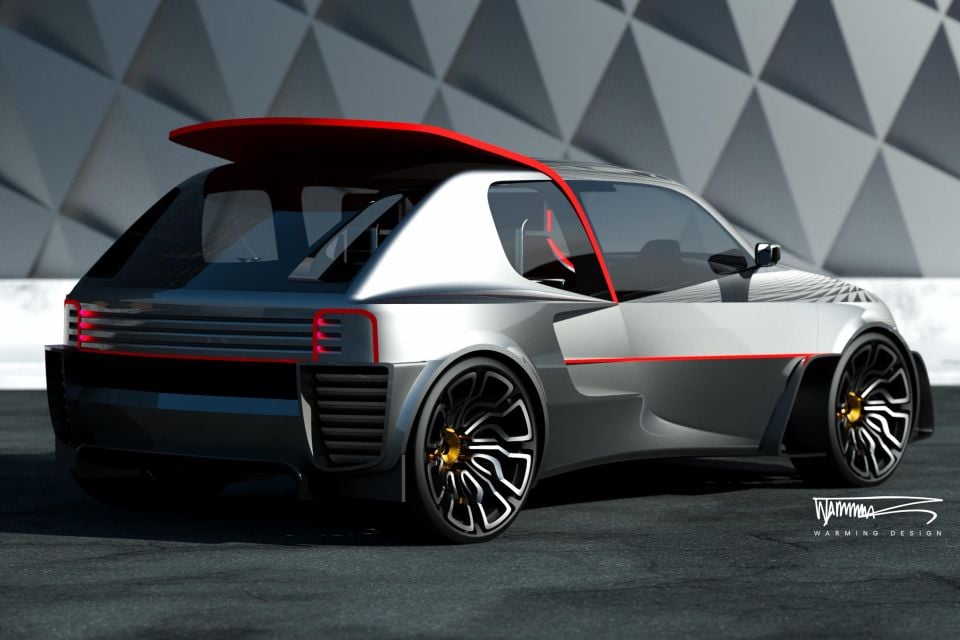
At the back, the inclined and large rear windscreen is retained, reaching a lot lower than in the vast majority of modern vehicles and bringing ‘80s vibes.
The floating C-pillar we examined before looks like a shark’s fin, leading the eye to the taillights and hiding the air channels on each side of the narrow rear windshield
Instead of adopting Peugeot’s modern “three-claw” LED graphics, the designer opted for a retro style with thin lines following the outer shape of rounded squares. The horizontal-line theme found at the front continues between the taillights, just like in the French supermini from the ‘80s.
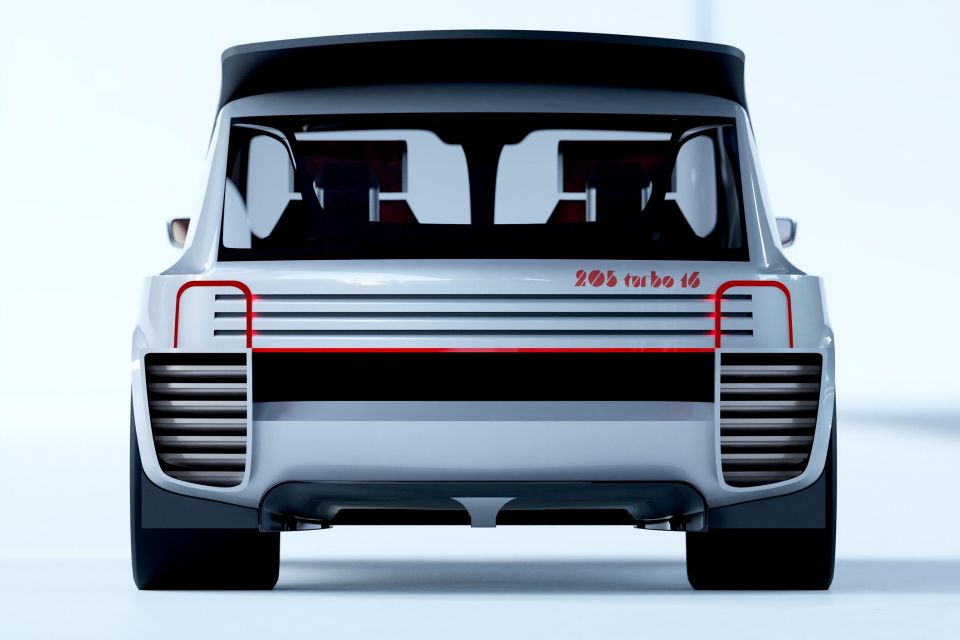
The rear bumper is characterised by two large inlets on the sides allowing hot air to escape, a central outlet, and a small rear diffuser at the bottom.
There are no visible exhaust pipes, making us wonder if this project could work as a fully electric hot hatch.
The designer didn’t provide us with renderings of the interior, but from the large windows we can see two racing-style bucket seats with rectangle-shaped headrests and metal housing, a red steering wheel, a touchscreen on the centre console, and a very cool-looking metal engine cover at the back.
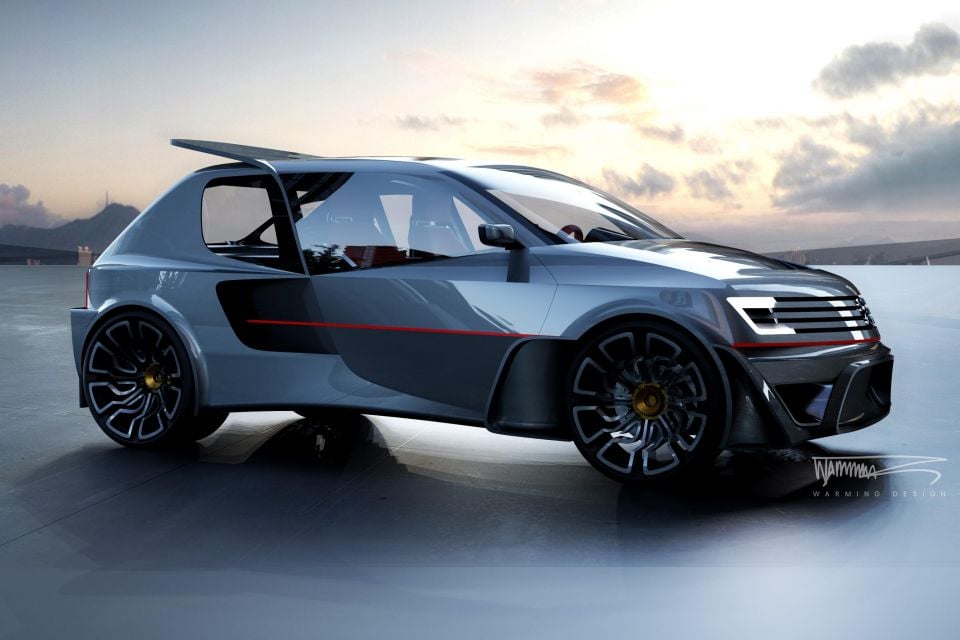
The Peugeot 205 T16 homage by Anders Warming is a reminder of how cool and exciting the Group B rally cars were. This design study is the realisation of a teenager’s dream in a professional manner, merging the past with modern and complex surfacing.
While it doesn’t follow Peugeot’s latest design language, it does a great job transferring the brutality of the original into 2021. In that context it wouldn’t look out of place in a sci-fi racing game.
Even though Anders’ P205T16 won’t find its way into the real world, if Peugeot decided to build a similar concept car it would probably get an enthusiastic response from petrolheads.
It’s clear the French company has taken a different path by eliminating the GTi nomenclature and focusing on moving upmarket.
While a homologation special is definitely not part of Peugeot’s current strategy, we should not rule out entirely a performance-oriented concept with plug-in hybrid or fully-electric propulsion as part of the recently created PSE (Peugeot Sport Engineering) department.
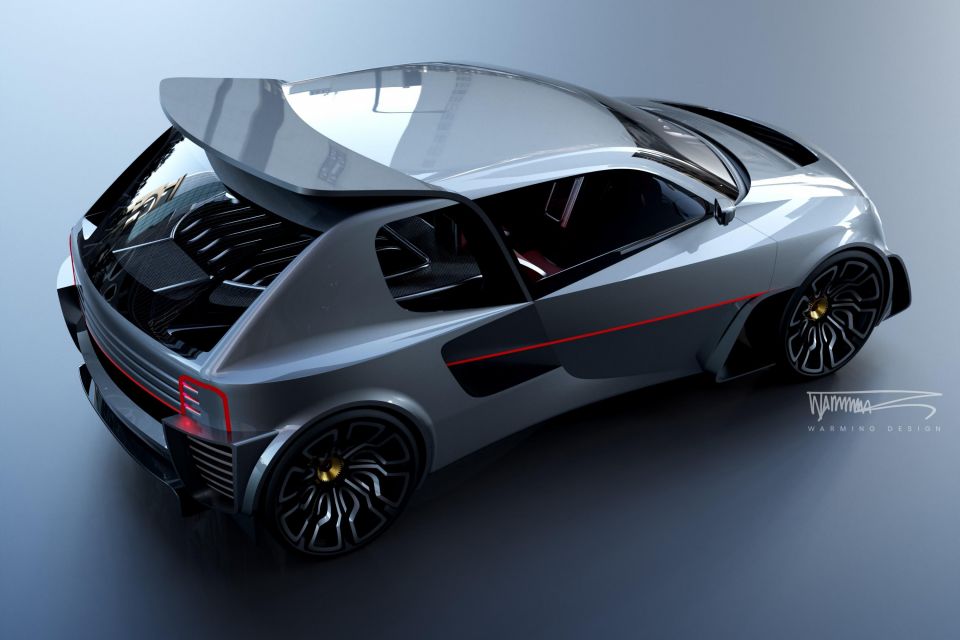
If you liked the Peugeot T16 you can follow Anders Warming on Instagram or visit his website.
Disclaimer: The P205T16 was independently designed by Anders Warming for show purposes as a free-time project, and is not associated with Peugeot or Stellantis.
Where expert car reviews meet expert car buying – CarExpert gives you trusted advice, personalised service and real savings on your next new car.


Matt Campbell
3 Hours Ago


Max Davies
19 Hours Ago


William Stopford
19 Hours Ago


Derek Fung
19 Hours Ago


Max Davies
1 Day Ago


William Stopford
2 Days Ago